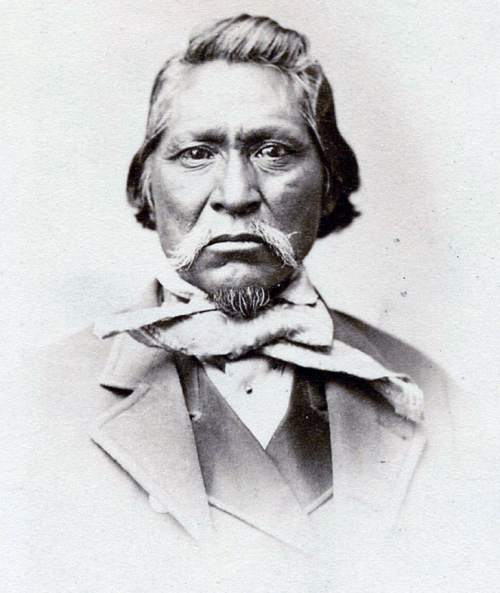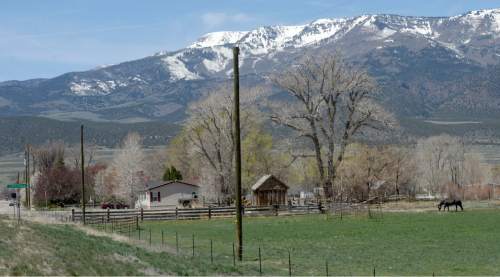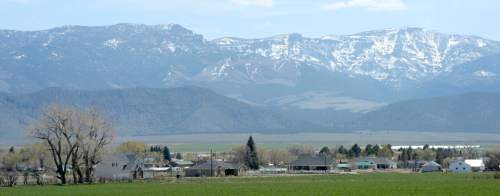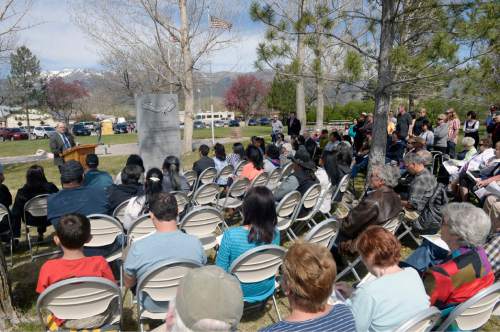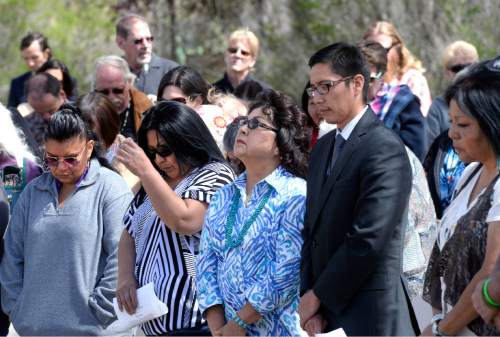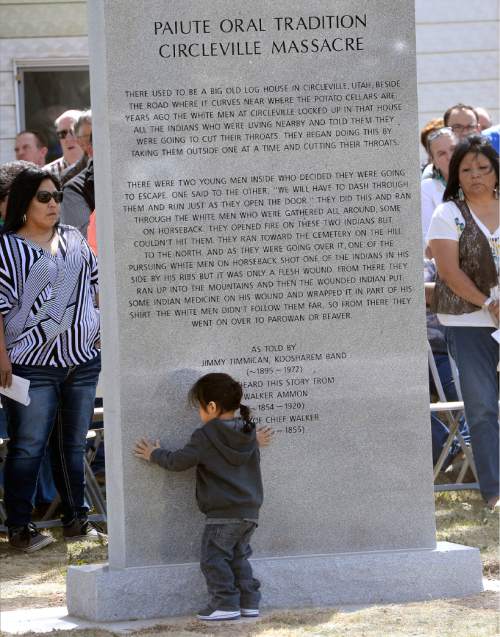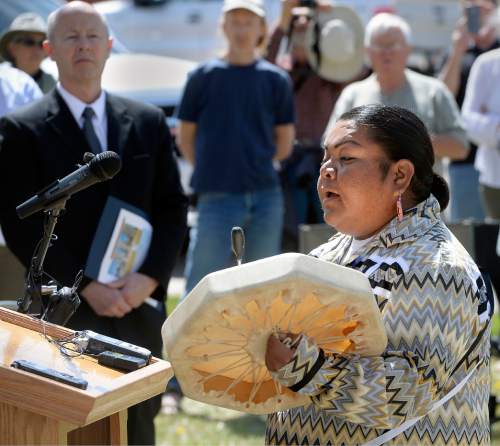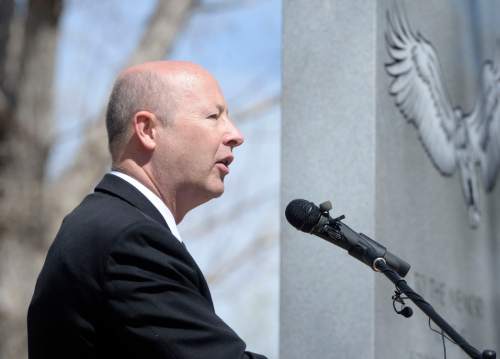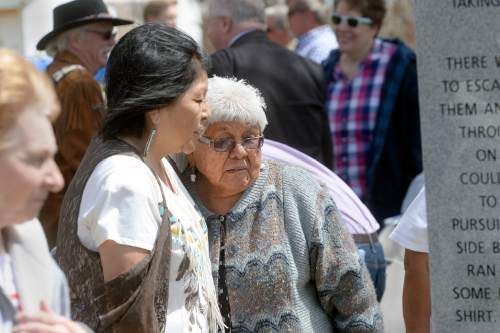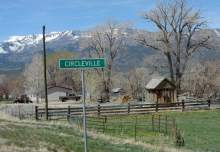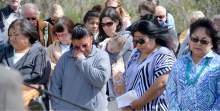This is an archived article that was published on sltrib.com in 2016, and information in the article may be outdated. It is provided only for personal research purposes and may not be reprinted.
In late April 1866, Mormon settlers in Circleville arrested and disarmed a band of Paiute Indians.
After shooting captives who had attempted to escape, settlers struck the remaining prisoners on the back of their heads before slitting their throats.
The attack claimed the lives of as many as 30 men, women and children of the Paiute Tribe's Koosharem Band, in what is now known as the Circleville Massacre.
Despite the day's status as the single biggest loss of American Indian life in state history, most Utahns are likely unaware that it happened, and relatively few specifics are known about what occurred, according to Jedediah Rogers, a senior historian with the Utah Division of State History.
"It's an event that has been forgotten by many in the Paiute Tribe, by people in Circleville itself and, of course, by the general Utah population," Rogers said.
On Friday, 150 years after the massacre, Circleville residents and representatives of the Paiute Tribe, state government and the History Department of The Church of Jesus Christ of Latter-day Saints dedicated a new memorial in honor of the Koosharem Band.
The stone monument, to be joined in the future by benches and landscaping, includes an account of the Paiute oral history of the Circleville Massacre.
For the Paiute Tribe, the massacre and subsequent attacks effectively wiped out the Koosharem Band, leaving few alive to remember and tell the story of Circleville, according to Dorena Martineau, cultural resource director of the Paiute Tribe of Utah.
"It's not taught in schools, it's not in the books," she said. "Like a lot of people, some of our people don't know or haven't heard about it."
On the monument, the image of a soaring eagle appears above this inscription: "In remembrance of the innocent who were lost in this place so long ago. None of us can ever hope to describe the emotions that these people might have felt. All we can do is honor their existence as human beings."
The innocence of the Koosharem Band is part of what gives the Circleville Massacre its historical significance, Rogers said.
The killings occurred at the height of Utah's Black Hawk War, which saw years of skirmishes between Mormon settlers and Utah's indigenous peoples.
The Black Hawk War largely involved the Ute tribes in the northern parts of the state.
But the tensions spread fear and suspicion throughout Utah's Mormon settlements.
And like the more-famous Mountain Meadows Massacre, which saw the mass murder of a California-bound wagon train at the hands of Mormon settlers, Rogers said the Koosharem Band was inadvertently caught up in the middle of a devastating conflict.
"The story is the victims," he said. "It's about a peaceful band of indigenous Utah Indians, the Paiute Tribe, being slaughtered by local Mormon settlers."
While there has long been discussion among historians about the need to better recognize the Circleville Massacre, assistant LDS Church historian Richard Turley said the plans for a monument began taking shape over the past year.
He said the massacre is unique because a significant loss of life was paired with a thorough evaporation from public awareness. Part of that is due, he said, to the population shifts in the area before and after the event.
Circleville was settled about a year before the massacre, and it was largely abandoned in a matter of years, to be repopulated later by settlers who were unaware of the area's tragic history.
"After it happened, the community essentially dissolved," Turley said. "People left for other parts, and I think it was one of those events that people were ashamed of — didn't want to talk about."
Today, Utah's Paiute Tribe includes a little more than 900 people, Martineau said, including 133 members of the Koosharem Band whose families arrived in the area mostly after the Circleville Massacre.
She said Utah's history includes many massacres, but few match the cultural devastation of the event in Circleville.
"It's time that this monument is going to be put up there for these people that had been pretty much forgotten," she said.
The monument's first phase, dedicated Friday, cost about $12,000, Rogers said. Once completed, the full project is expected to cost between $35,000 and $40,000.
He also said the funds for the initial design stages were provided by the LDS Church.
The monument stands as a tangible reminder of a dark period in LDS history, but Turley said it's important to know and remember both the good and bad of the past.
Like many people, Turley said, he grew up hearing "cowboys and Indians" stories, which typically featured the indigenous people of the United States as aggressors against white settlers.
He said recognizing horrific events like the Circleville Massacre is an important part of creating a more accurate picture of U.S. and Utah history.
"Students of history of the West will tell you that if you tabulate the data, the Indians were more often the victim than the aggressor," he said. "It's a different narrative than we had back when I was growing up."
Twitter: @bjaminwood


